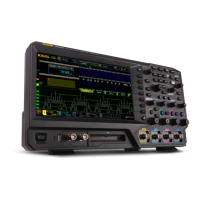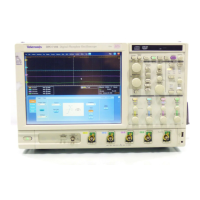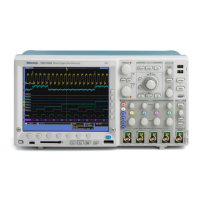Commands Listed in Alphabetical Order
PHAseref:CHA
R (No Query Form)
This command runs a phase reference characterizationontheclockconnectedto
the input of the Phase Reference Module that is currently selected as the Phase
Ref source.
After connecting a clock to the Phase Reference Module, turning the module
on (using th
e PHAseref:MODe command), and notifying the instrument of
its frequency (using the PHAseref:<CHx>:FREQuency command), use the
PHAseref:CHAR command to characterize the clock signal.
NOTE. Use the PHAseref:CH<x>:STAtus? command to ascertain the outcome of
the characterization. There is no query form for PHAseref:CHAR.
Group
Phase Reference
Syntax
PHAseref:CHAR
Related Commands
PHAseref:CH<x>:FREQuency, PHAseref:MODe, PHAseref:SOUrce,
PHAseref:CH<x>:RANge?, PHAseref:CH<x>:STAtus?
Examples
PHASEREF:CHAR initiates a characterization of the currently selected Phase
Reference Module.
PHAseref:CH<x>:FREQuency
This command sets (notifies the instrument of) or queries the frequency of the
phase reference clock that is connected to the Phase Reference Module specified
by CH <x>, where <x> is a channel associated with the compartment in which the
Phase Ref Module is installed. You can use either of the two channels associated
with the compartment. For example, if the module is installed in the CH7/CH8
compartment, x can be 7 or 8.
NOTE. You must connect a phase reference clock to the input connector of the
Phase Reference Module to use the phase-correction timebase that it supplies.
Then, you must specify to the instrument the source, using the PHAseref:SOUrce
command, and the frequency of the clock that you have supplied, using the
PHAseRef:CH<x>:FREQuency command.
Group
Phase Reference
2-262 DSA/CSA/TDS8X00/B Series Programmer Manual

